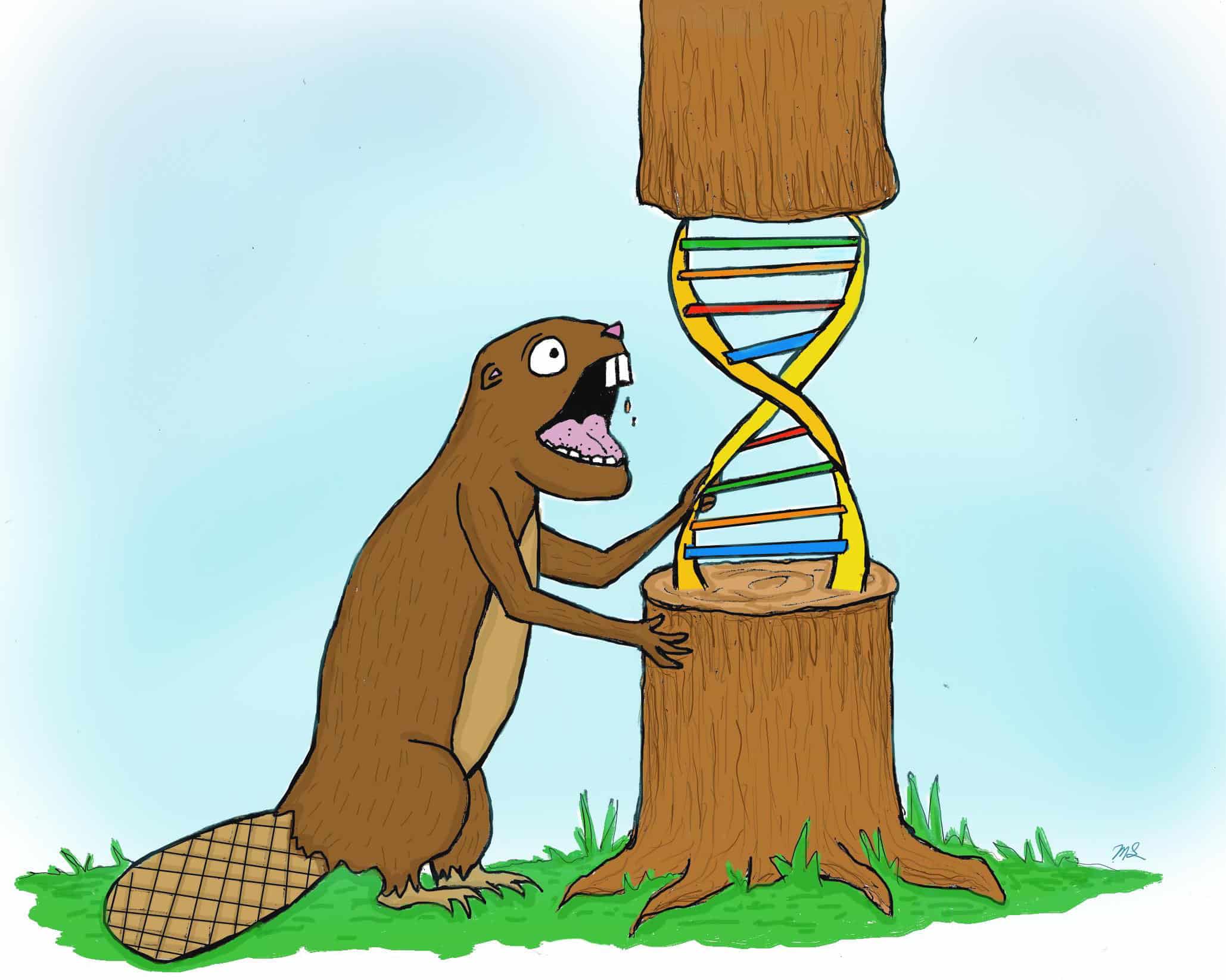Drake is not the only Canadian icon to have started from the bottom. Once driven to near-extinction by the fur trade, the Canadian beaver gained recognition as a national emblem in 1975 and is now the newest organism to have its whole genome sequenced.
Researchers from The Centre for Applied Genomics (TCAG) at The Hospital for Sick Children (SickKids) used DNA from Ward, a 10-year-old male beaver who lives at the Toronto Zoo, to carry out this project.
In time for Canada’s one hundred and fiftieth anniversary, this team is the first to map out the genes of a beaver.
“The Human Genome Project (HGP) generated a reference genome sequence,” said Dr. Stephen Scherer, senior author of the study and Professor in the Department of Molecular Genetics at the University of Toronto.
He compared the HGP to completing a 3-billion-piece jigsaw puzzle for the first time. Piecing together a puzzle like this for every individual is difficult, so only the sections that vary are sequenced anew.
The current resequencing technique is analogous to taking apart and reconstructing one per cent of that puzzle while leaving the other 99 per cent intact. That one per cent is what varies among individuals in a population.
“Those pieces don’t fit well into your reference genome,” Scherer explained.
The beaver genome endeavour is part of a larger goal to develop a new technology called ‘de novo sequencing.’
“What we wanted to do is develop an approach that’s high-throughput and cost-efficient and de novo,” said Scherer. “A first draft Human Genome Project for every individual instead of just comparing the sequence to the reference — that’s de novo sequencing. That’s the ideal sequencing.”
Scherer noted that de novo sequencing is still more expensive than resequencing. “But the quality of the data… is much more comprehensive, and now we have a framework to work around, we can try to increase efficiencies in the laboratory [and] bring prices down,” he explained.
By studying another species, in this case a beaver, scientists can more easily develop these sequencing methodologies. This project allows Scherer to “find out what those gene sequence differences are between humans and beavers… to see what contributes to the uniqueness of the beaver species. Then we can also infer what makes us unique.”
His team also wanted to demonstrate the versatility of the technique. “DNA is DNA,” said Scherer, indicating that these machines could be applied to any species’ genome.
When asked why they chose to sequence the beaver, Scherer replied, “We could think of 150 reasons to do it and we couldn’t think of any reason not to do it,” a nod to Canada’s anniversary.
Scherer and his team are working to identify genes involved in autism and apply the same technology used to sequence the beaver genome to human DNA samples from individuals with autism and other disorders.
“For about 20 per cent of the families with autism, we can explain, based on genetics, why they have autism,” said Scherer. “We’re going to take some of those samples where we don’t have an explanation [and] use this new sequencing approach to see if we can find something we had missed before.”
Not only does this technology help to bridge the gap between genomics and precision medicine, the data collected from this study has also been stored in a public database so as to be available to scientists around the world as a reference for future comparative studies.
Nonetheless, Scherer believes the significance lies more so in the project itself rather than in the data. “For years we did not have the technology in Canada to do genome sequencing. We actually had to send it out to China or the United States,” explained Scherer. “And we’re now one of the biggest whole genome sequencing centres in the world.”
Scherer’s lab sequences approximately 10,000 human genomes a year.
“We needed to do this in Canada,” Scherer explained. “There were other groups thinking of doing it in the United States but this is the one thing we can say is truly Canadian.”


